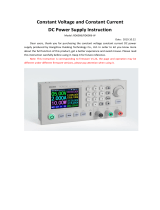4 • VACON® apfiff40 SIA II
Local contacts: http://drives.danfoss.com/danfoss-drives/local-contacts/
7.2.2 Constant Reference ................................................................................................................... 56
7.2.3 Torque Reference ...................................................................................................................... 57
7.2.4 Torque Reference OL Settings .................................................................................................... 57
7.2.5 Prohibit Speed parameters ........................................................................................................ 58
7.2.6 Motor Potentiometer ................................................................................................................ 58
7.2.7 Adjust Reference ....................................................................................................................... 58
7.2.8 Follower .................................................................................................................................... 59
7.3 Ramp Control ................................................................................................................................ 60
7.3.1 Basic Settings ............................................................................................................................ 60
7.3.2 Quick Stop ................................................................................................................................. 60
7.3.3 Ramp Control Options ............................................................................................................... 61
7.4 Input Signals .................................................................................................................................. 61
7.4.1 Basic Settings ............................................................................................................................ 61
7.4.2 Digital inputs ............................................................................................................................. 62
7.4.3 Analogue input 1 ....................................................................................................................... 63
7.4.4 Analogue input 2 ....................................................................................................................... 63
7.4.5 Analogue input 3 ....................................................................................................................... 64
7.4.6 Analogue input 4 ....................................................................................................................... 64
7.4.7 Options ..................................................................................................................................... 64
7.5 Output Signals ............................................................................................................................... 65
7.5.1 Digital output signals ................................................................................................................. 65
7.5.2 Analogue output 1 ..................................................................................................................... 66
7.5.3 Analogue output 2 ..................................................................................................................... 66
7.5.4 Analogue output 3 ..................................................................................................................... 67
7.5.5 Analogue output 4 ..................................................................................................................... 67
7.5.6 Delayed digital output 1............................................................................................................. 68
7.5.7 Delayed digital output 2............................................................................................................. 68
7.6 Limit Settings ................................................................................................................................. 69
7.6.1 Current handling........................................................................................................................ 69
7.6.2 Power Handling ......................................................................................................................... 69
7.6.3 Torque Handling ........................................................................................................................ 69
7.6.4 Speed Handling ......................................................................................................................... 69
7.6.5 DC-Link Handling ....................................................................................................................... 70
7.7 Flux and DC Current handling ......................................................................................................... 71
7.7.1 Flux and DC Current handling OL Settings .................................................................................. 71
7.7.2 Flux and DC Current handling CL Settings ................................................................................... 71
7.8 Motor Control ............................................................................................................................... 72
7.8.1 Motor Control Basic Settings ..................................................................................................... 72
7.8.2 Open Loop ................................................................................................................................. 72
7.8.3 Closed Loop Control Settings ..................................................................................................... 73
7.8.4 PMSM Control settings .............................................................................................................. 74
7.8.5 Stabilators ................................................................................................................................. 75
7.8.6 Tuning parameters .................................................................................................................... 76
7.8.7 Identification parameters .......................................................................................................... 77
7.8.8 Fine tuning parameters.............................................................................................................. 78
7.8.9 SM Excitation ............................................................................................................................ 78
7.9 Speed Control ................................................................................................................................ 80
7.9.1 Speed Control CL Settings .......................................................................................................... 80
7.9.2 Speed Control Basic settings ...................................................................................................... 80
7.9.3 Speed Control OL Settings.......................................................................................................... 80
7.10 Drive Control ................................................................................................................................. 81
7.11 Master Follower Control Parameters ............................................................................................. 81
7.12 Protections .................................................................................................................................... 82
7.12.1 General settings .................................................................................................................... 82
7.12.2 Temperature sensor protections............................................................................................ 82
7.12.3 Stall Protection ...................................................................................................................... 83
7.12.4 Speed error monitoring ......................................................................................................... 83























